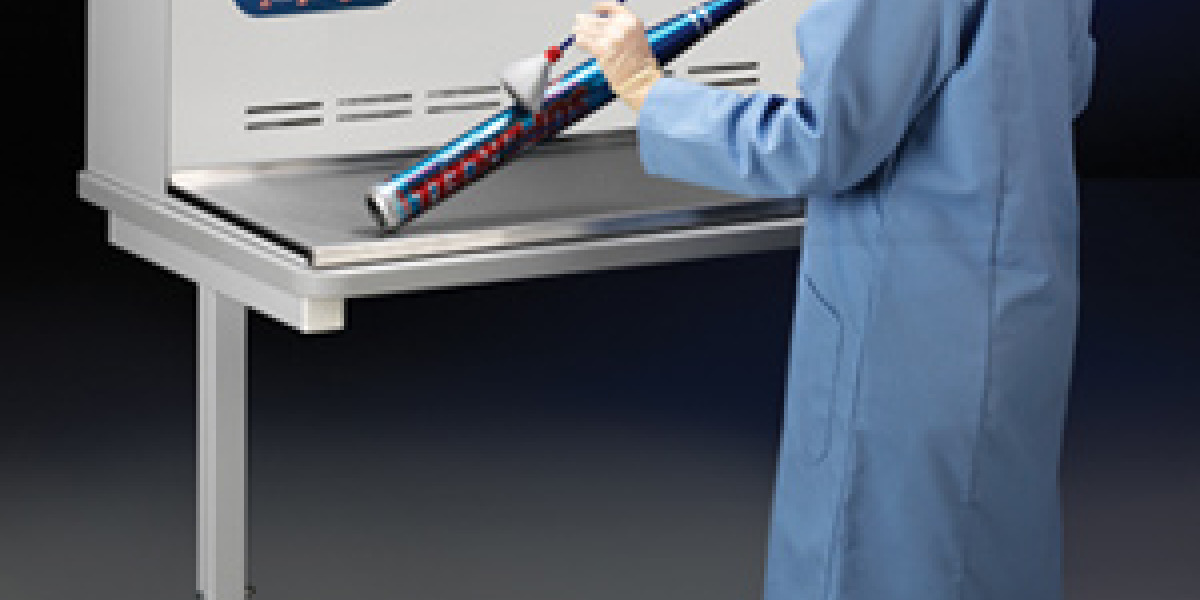Contain the cost, mess of latent print powder fingerprinting

Dusting evidence with latent print powders for fingerprints is a common forensic method frequently used to solve crimes. Fingerprint dusting is an effective, simple technique that can produce a big mess.
Fine latent print powders are not just a hygiene issue to the lab, but are a health concern to users who breathe the powders. To contain powders and protect themselves, many users dust their evidence pieces inside a chemical fume hood.
In most cases, as a result of the powder mess that is created inside the hood, the chemical fume hood becomes used exclusively as a “fingerprinting hood.” Other types of procedures once performed in the hood are no longer done in the “fingerprinting hood” because it is impossible not to contaminate other samples with the latent print powders that are in it.
Furthermore, chemical fume hood use is one of the biggest operation expenses for labs. Replacing tempered air that is exhausted out of chemical fume hoods results in high energy consumption. A typical 4-foot fume hood exhausts air at the rate of 470 cubic feet per minute and costs an average of $6,000 per year to operate.
When using latent print powders, a ductless, filtered enclosure with a downflow design offers many advantages over traditional chemical fume hoods. The ductless downflow enclosures are cleaner, mobile and require less operating expenses than traditional chemical fume hoods.
Ductless low enclosures are energy efficient and effective devices for the containment of fingerprint powders. Downflow enclosures utilize catch trays, prefilters and HEPA filters to remove the powders out of the air and return the tempered room air back to the room.
With ductless designs, labs do not have to worry about the makeup air that chemical fume hoods require. Another benefit to the ductless design is mobility. Downdraft powder enclosures do not require ductwork so they are a perfect fit for modular labs and placement is not restricted by the ability to run required ductwork. Installation is simple and inexpensive compared to chemical fume hoods where a duct must be installed and a blower purchased.
Because the powders are heavier than air and the air is being drawn down, powders are collected in the catch pan below the perforated worksurface. Powder mess is minimized.
The NEW Labconco Protector Downdraft Powder Stations were designed with valuable input from latent print examiners, which resulted in our engineers designing several exclusive features:
- Open top design gives the user freedom of unrestricted movement and makes dusting large pieces of evidence easy.
- Stations can be linked side by side to create large continuous worksurfaces.
- Stations come with a shelf to hold powders, brushes and supplies.
- Flow-Zone™ Perforations in the stainless steel work surface maximize containment.
- Catch pan can be easily emptied without the need for tools.
Available in 2' and 3' widths The Protector Downdraft Powder Stations join our Protector™ Evidence Drying Cabinet and CApture™ Portable Fuming System in a line of new forensic equipment. In addition to these forensic enclosures, Labconco offers a wide variety of more general ventilation equipment such as fume hoods, ductless filtered enclosures, biosafety cabinets, and PCR enclosures.
| chevron_left | Labconco LEED Products Measure Up | Articles | Visit us at Pittcon booth 1525! | chevron_right |






